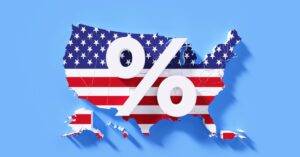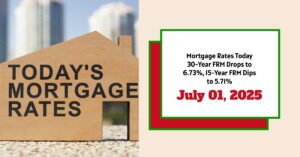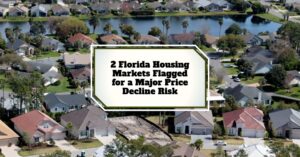Is 2025 the year to buy, sell, or hold tight in the housing market? It's the question on everyone's mind. Right now, the housing market 2025 is marked by a significant amount of uncertainty. A Bank of America report indicates that 60% of homeowners and prospective buyers are unsure about whether it's a good time to buy, a three-year high in hesitancy. But amidst this confusion, there's a glimmer of optimism, particularly among prospective buyers.
Housing Market Uncertainty Hits Three-Year High in 2025 : Bank of America
What's behind this mixed bag of feelings? Let's dive into the key factors shaping the market and what you need to know to make informed decisions.
Why Are People So Confused?
The current housing market feels a bit like navigating a maze in the dark. Several factors are contributing to the general sense of uncertainty:
- Interest Rate Volatility: Interest rates have been on a rollercoaster, impacting affordability and making it difficult to predict future mortgage costs.
- Home Price Fluctuations: While some areas have seen prices stabilize or even dip slightly, others remain stubbornly high. This inconsistency makes it challenging to determine a fair price.
- Economic Concerns: Lingering questions about inflation and potential economic slowdowns cast a shadow over the market, making people cautious about making large financial commitments.
- Severe Weather and Natural Disasters: Concerns about the impact of severe weather and natural disasters has become top-of-mind for many homeowners and prospective buyers around the country.
It's no wonder people are hesitant! Personally, I've felt the same way. Even as someone who follows the market closely, it's tough to make confident predictions when things are so unpredictable. The average person just looking to buy a house may have an even tougher time breaking through these clouds of uncertainty.
The Buyer's Perspective: Cautious Optimism and Compromises
Despite the uncertainty, there's a vein of hope running through the prospective homebuyer population. The Bank of America report points out that 52% feel the market is better than it was a year ago. This optimism stems from the expectation that prices and interest rates will eventually fall.
- Waiting Game: A whopping 75% of prospective buyers are playing the waiting game, anticipating more favorable conditions before jumping in.
- Gen Z's Innovative Strategies: Younger generations, in particular, are finding creative ways to overcome financial hurdles:
- Extra Jobs: 30% of Gen Z homeowners took on an extra job to cover their down payment.
- Co-Buying with Siblings: 22% of Gen Z homeowners purchased with siblings, a trend that's been on the rise.
- Living at Home: 34% of Gen Z prospective buyers would consider living with family while saving to buy.
- Family Loans: 21% of Gen Z plan to get a down payment loan from family, compared to 15% of the general population.
I think this shows a lot of resilience and determination. The dream of homeownership is clearly still alive and well, especially among younger folks, but they are getting super creative and trying to get there by any means possibly, even if has to be with roommates, living back with their parents, taking out multiple jobs, etc.
The Seller's Dilemma: Navigating a Shifting Market
For homeowners considering selling, the market situation is equally complex. While demand remains relatively strong in some areas, sellers may need to adjust their expectations.
- Realistic Pricing: Overpricing a home can lead to it sitting on the market for longer, potentially forcing price reductions later on. Consulting with a local real estate agent for an accurate market analysis is crucial.
- Highlighting Key Features: With severe weather being top of mind for buyers, improvements that protect against severe weather, like storm shutters or reinforced roofs, can be major selling points.
Interest Rates and the Fed: The Elephant in the Room
The Federal Reserve's decisions regarding interest rates continue to be a major driving force in the housing market. Any signals about future rate cuts or pauses can significantly impact buyer sentiment and borrowing costs.
- Inflation Data: Keep a close eye on inflation reports, as they heavily influence the Fed's actions.
- Fed Meetings: The Fed's meetings and press conferences provide valuable insights into their economic outlook and policy intentions.
- Mortgage Rate Trends: Follow daily mortgage rate trends to get a sense of borrowing costs and how they are reacting to market news.
As someone who's followed markets for a while I predict that small, incremental rate hikes might be the case to reduce inflation in a smooth way rather than causing abrupt shifts that will affect the economic status of everyday people.
The Impact of Severe Weather on Homebuying
One of the more alarming trends is the growing concern of severe weather. According to Bank of America's report, 62% of homeowners and prospective buyers are concerned about the impact of severe weather and natural disasters on homeownership.
- Location, Location, Location: Around 73% feel it is important to buy in areas where there is a lower risk of these events occurring.
- Changing Preferences: 38% have changed their preferred home purchasing location due to the risk of severe weather in the area.
- Past Damage: Among current homeowners, nearly a quarter (23%) have personally experienced property damage or loss in the last 5 years due to severe weather events.
- Preparation: 65% of current homeowners are taking measures to prepare their home for the risk of severe weather.
This is a significant shift in priorities. Buyers are now factoring in climate risk when deciding where to buy, and homeowners are investing in measures to protect their properties. It's no longer just about finding the perfect house; it's about finding a safe and resilient home.
The Future is Still Being Written:
It's important to remember that the housing market 2025 is a moving target. There are several factors that could influence the market in the coming months:
- Employment Growth: A strong job market can boost consumer confidence and increase demand for housing.
- Housing Supply: Any increase in new construction could help to alleviate supply constraints and moderate price growth.
- Government Policies: Government policies, such as tax credits or down payment assistance programs, can impact homeownership affordability.
Key Takeaways for Navigating the Housing Market in 2025:
- Stay Informed: Keep up-to-date on market trends, economic indicators, and interest rate developments.
- Seek Professional Advice: Consult with a trusted real estate agent, mortgage lender, and financial advisor.
- Be Patient and Flexible: Be prepared to adjust your expectations and timelines as the market evolves.
- Consider Your Personal Finances: Make sure you're financially prepared for the responsibilities of homeownership.
- Factor in Climate Risk: Assess the potential impact of severe weather on your property and location.
The housing market is still a tricky thing to maneuver. Being conscious of all external factors and relying on the correct insights is key to navigating this market to your own benefit.
Plan Ahead with These Housing Market Insights
The housing market is shifting—some regions are cooling while others remain resilient. Stay ahead of national trends by focusing on stable investment areas with long-term growth potential.
Norada helps investors like you discover turnkey real estate opportunities in cities forecasted for strong performance in both 2025 and 2026.
HOT NEW LISTINGS JUST ADDED!
Talk to a Norada investment counselor today (No Obligation):
(800) 611-3060
Also Read:
- Housing Market Boom Predictions for 2025 and 2026 by NAR
- Housing Market Predictions: Home Prices to Drop 1.4% in 2025
- Housing Market Alert: Over 600 Metros Will See Prices Decline by 2026
- 12 Housing Markets Set for Double-Digit Price Decline by Early 2026
- Real Estate Forecast: Will Home Prices Bottom Out in 2025?
- Housing Markets With the Biggest Decline in Home Prices Since 2024
- Why Real Estate Can Thrive During Tariffs Led Economic Uncertainty
- Rise of AI-Powered Hyperlocal Real Estate Marketing in 2025
- Real Estate Forecast Next 5 Years: Top 5 Predictions for Future
- 5 Hottest Real Estate Markets for Buyers & Investors in 2025
- Will Real Estate Rebound in 2025: Top Predictions by Experts
- Recession in Real Estate: Smart Ways to Profit in a Down Market
- Will There Be a Real Estate Recession in 2025: A Forecast
- Will the Housing Market Crash Due to Looming Recession in 2025?
- 4 States Facing the Major Housing Market Crash or Correction
- New Tariffs Could Trigger Housing Market Slowdown in 2025
- Real Estate Forecast Next 10 Years: Will Prices Skyrocket?







